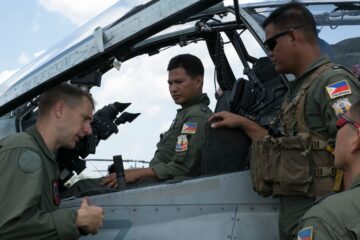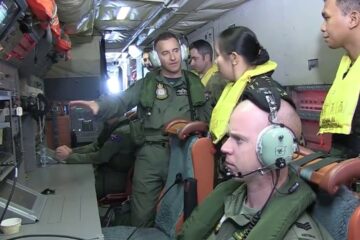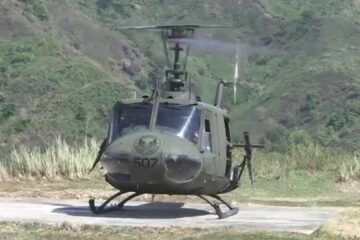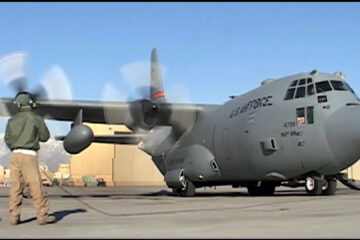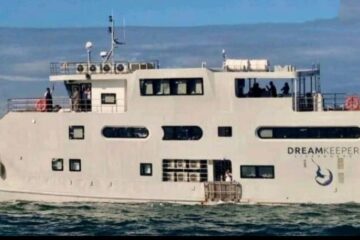An unmanned aerial vehicle is an aircraft without a human pilot onboard and a type of crewless vehicle. These unmanned airborne aircraft are a component of an unmanned aircraft system (UAS), which includes a ground-based controller, and a network of communications between the two name capability. Flying of Unmanned AVs may operate with various degrees of autonomy, either under remote control by a human operator or autonomously by onboard computers.
In this video, we discuss the procurement of the Philippine Air Force Unmanned Aerial Vehicle.
Hermes 450
Elbit Systems offered the Hermes 450 unmanned aerial vehicle to the Armed Forces of the Philippines for a long time. After several years of waiting, the deal has finally come to an end. The Philippine government finally acquires several Israel made unmanned aerial vehicles.
The unmanned aircraft has an endurance of over 30 hours and can fly at maximum altitude of up to 30,000 feet, with a primary mission of reconnaissance, surveillance, and communications relay.
The unmaned aerial vehicle is around 6 meters long, a wingspan of about 10 meters, maximum take-off weight of approximately 450 kilograms, and has a maximum payload weight of 150 kilograms.
The vehicle also has a cruising speed of around 130 kilometers per hour and a top speed of 176 kilometers per hour. With a maximum range of 300 kilometers, it is advised to use it at the line of sight circumstances, where a safe distance is around 150 kilometers.
It has a maximum endurance of up to 20 hours and an operating altitude of 16,000 feet above sea level with a primary mission of reconnaissance, surveillance, and communications relay.
HERMES 900
In 2017, Elbit Systems completed a range of demonstration flights with its Hermes 900 unmanned air vehicle for the Philippine air force.
The Hermes 900 is already operational with the Israeli air force and used to Brazil, Colombia, and Switzerland.
The 1,100 kilogram Hermes 900 can operate at more than 30,000 feet while and carries a large sensor payload up to 300 kilograms.
Elbit also has developed a version optimized for maritime patrol missions, capable of carrying a sensor package totaling 350 kilograms, including a naval surveillance radar, electro-optical/infrared sensor, automatic identification system, and electronic surveillance equipment.
According to Elbit, satellite communication fitted in the aircraft allow extended ranges, as far as 1,850 kilometers from shore.
The Philippine Air Force (PAF) has received partial delivery of ordered Hermes 900 medium altitude long endurance unmanned aerial vehicles from Israeli company Elbit Systems.
The Philippine Air Force has received partial delivery of ordered Hermes 900 medium altitude long endurance unmanned aerial vehicles from Israeli firm Elbit Systems.
In November this year, Philippine Air Force Elbit Systems Hermes 900 Unmanned Aerial Vehicle with Tail Number 9001 and 9002 appears on Philippine Air Force depot.
Elbit also has developed a version optimized for maritime patrol missions, capable of carrying a sensor package totaling 350kg, including a naval surveillance radar, automatic identification system, electro-optical/infrared sensor, and electronic surveillance equipment.
The Hermes 900 is already operational with the Israeli air force and has been sold to Brazil, Colombia, and Switzerland.
The deal of several Hermes 900 and Hermes 450 was signed in April 2018, and some of these Unmanned Aerial vehicles are already tested and in the inventory of the Philippine Air Force aircraft list.
The sale is part of a Government-to-Government engagement between the Philippines’ Department of National Defense and the Israeli Ministry of Defense.


